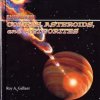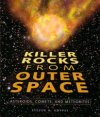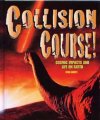A Smashing Display Additional Information
Share this:
- Share via email (Opens in new window) Email
- Click to share on Facebook (Opens in new window) Facebook
- Click to share on X (Opens in new window) X
- Click to share on Pinterest (Opens in new window) Pinterest
- Click to share on Reddit (Opens in new window) Reddit
- Share to Google Classroom (Opens in new window) Google Classroom
- Click to print (Opens in new window) Print
2005. NASA’s Deep Impact generates its own spectacular photo flash. NASA press release. July 4. Available at www.nasa.gov/mission_pages/deepimpact/media/deepimpact-070405-2.html.
To learn more about experiments at Brown University to study what might happen to a comet hit by a projectile, go to www.brown.edu/Administration/News_Bureau/2004-05/04-148.html (Brown University).
Cowen, Ron. 2005. A grand slam. Science News 168(July 9):22. Available at http://www.sciencenews.org/articles/20050709/bob7.asp.
McDonagh, Sorcha. 2004. Catching a comet’s tail. Science News for Kids (Jan. 14). Available at http://www.sciencenewsforkids.org/articles/20040114/Note2.asp.
Sohn, Emily. 2003. Sky dust keeps falling on your head. Science News for Kids (Aug. 13).
Available at http://www.sciencenewsforkids.org/articles/20030813/Feature1.asp.
Deep Impact lesson plans and activities for teachers: deepimpact.umd.edu/educ/index.html(University of Maryland).
Books recommended by SearchIt!Science:
 |
Comets, Asteroids, and Meteorites— Roy A. Gallant
Published by Benchmark Books/Marshall Cavendish, 2001.
Hairy stars, missing planets, and falling skies? Don’t panic! It’s just Roy Gallant describing the properties of comets, asteroids, and meteorites. Full-page color photographs bring these “out-of-this-world” concepts “down to Earth” for the reader. Find out about icebergs in space, the chances of Earth being struck by an extraterrestrial object, and get a glimpse of the view from space in the pages of this book. |
 |
Killer Rocks from Outer Space: Asteroids, Comets and Meteorites— Steven N. Koppes
Published by Lerner Publishing, 2004.
Yes, there are lumps of dusty ice silently streaking through space as you read this. So what, you might ask? Well, just one of these lumps is capable of wiping out our entire civilization, if it were to hit Earth. This fascinating book traces the history of impacts upon planet Earth. It explains how scientists track asteroids and comets. Also, it goes in-depth into how we recognize impact craters and scars, using Meteor Crater in Arizona as an example and discussing astroblemes and tektites. Then, the book discusses what happened to the dinosaurs, mass extinctions, impacts upon other planets, and the present and future threat of meteor collisions. |
 |
Collision Course! Cosmic Impacts and Life on Earth — Fred Bortz
Published by Millbrook Press, 2001.
What happens when comets and asteroids collide with planets? Meet the people who study and try to understand occurrences such as the Tunguska event of 1908 in Siberia or the crash of Comet Shoemaker-Levy 9 into Jupiter in 1994. Explore how scientists detect asteroids and how they might be able to prevent near-Earth asteroids from colliding with the planet. |
Power Words
projectile An object that is shot or thrown forward through the air or through space. Bullets and rockets are projectiles.
shock wave A large wave that forms when a substance or an object moves through a fluid so fast that the waves in the fluid pile up on each other. Shock waves can be caused by
explosions or by objects moving through a fluid at a speed greater than the speed of sound. Airplanes traveling at supersonic speeds create shock waves.
Copyright © 2002, 2003 Houghton-Mifflin Company. All rights reserved. Used with permission.
